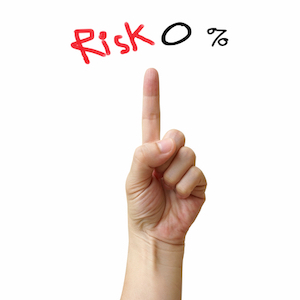By Dr. Ken Broda-Bahm:

Everyone supports safety. The popular “Reptile” approach to trying plaintiffs’ cases is built on the strength of safety as a core value. It is a common sense attitude to prefers greater security over greater risk. But there is also an extreme version of that attitude – a version that tolerates zero risks, says that “one time is too many,” and says that even the potential for any harm means that the social situation or the consumer product shouldn’t be allowed. That extreme version is referred to as “safetyism” by Greg Lukianoff and Jonathan Haidt, the authors of a 2019 book on the subject. A perfectionist attitude toward personal safety, they say, has been emerging in the last few decades, and emphasizes worst case thinking, feelings over facts, and a binary “good versus evil” mindset. For some on the defense side in litigation, there is a concern that a growth in this mindset might be responsible for some of the recent “nuclear” verdicts in personal injury and products cases.
The ”safetyist” attitude may be more common than we think. In an article by two IMS consultants (Leibold & Polavin, 2023) that first appeared in Law 360, the authors share results from their survey of 200 jury-eligible Americans. They found:
- 92% agreed companies should take every possible measure to ensure their products are 100% safe.
- 83% agreed that products and pharmaceuticals should warn about every possible risk or side effect, no matter how small.
- 69% say they would stop using a product if they read it might cause cancer.
- 66% said that they had already stopped using a product due to health and safety concerns.
Those agreeing, in addition to being in the majority, were also higher educated, more urban, and more liberal. Of course, it is easy to agree with some of these statements in the abstract, and harder in the context of a specific case or one’s own life. But, that said, those who sign on to such attitudes are likely to be higher risk jurors in a variety of defense cases. Where it matters, it makes sense to ask about the attitude in voir dire. In this post, I will look at ways to question in order to discover the riskiest, and ways to prime the remaining jurors against it.
The main questions to uncover the extremes on safetyism can be grouped into three classes.
Experience Questions
-
- Have you ever been injured due to what you saw as an unsafe product or situation?
- Have you ever felt you faced an unacceptable risk due to an unsafe product or situation?
- Have you ever stopped using a product due to safety concerns?
- Have you ever left a location or situation because you didn’t feel safe?
For each of these, the follow-up should be “Tell me about that,” with an eye toward deciding whether they’re expressing common sense caution or a more extreme intolerance for risk. For those jurors with recent or intense experiences, it could rise to being a cause challenge.
Agree/Disagree Questions
For questions like this, you can ask “Who agrees…” (which helps nudge them toward a response better than “Does anyone agree….”). When those who are more favorable for you are those who don’t agree, and when they’re safely in the majority, you can elicit some good priming by asking, “I noticed you didn’t raise your hand, why not?”
-
- Who agrees that no risk is tolerable?
- Who believes that it is possible to be fully safe in this kind of situation?
- Who feels the government should be doing more to promote consumer safety?
- Who believes that if a situation can be made to be fully safe, then it definitely should be?
- Who agrees that if injuries occurred, that is enough to tell you the product is at fault?
Forced-Choice Questions
A final type of question is the one that asks jurors which of two polar attitudes they are closer to agreeing with, an approach I learned from consultant Karen Lisko. Ideally, they’ll be fine-tuned so that a minority sides with the worse-for-you option (and you note those for possible strikes), while a majority sides with the better-for-you-option (and you prime the panel by asking those jurors why they think that).
-
- Some people say zero risk is the goal,’while others say that in order to live you need to accept some risks. Who is closer to the first view? Who is closer to the second?
- If you had to prioritize one over the other, who would say product warnings are more important than common sense? And who would say common sense is more important than product warnings?
- If an injury happens on a premises, some people feel that the owner is automatically at fault, while others would say it depends on whether that owner did or didn’t take reasonable care to avoid that injury. Who is closer to the first view? Who is closer to the second?
Those are broad questions, and it will always pay to tailor the questions to the specific circumstances, the type of injury, and the precautions taken by defendant and plaintiff in your case.
____________________
Other Posts on Voir Dire:
- Don’t Look for AI to Pick Your Jury…Yet
- Pull Your Potential Jurors Out from under the ‘Blanket of Anonymity’
- Save the Strikes: ASTC’s Research-Based Case Against Prohibiting the Peremptories
____________________
Leibold, J., & Polavin, N. (May, 2023). The Rise of Safety-ism Is Influencing Verdicts. JD Supra.
Lukianoff, G., & Haidt, J. (2019). The coddling of the American mind: How good intentions and bad ideas are setting up a generation for failure. Penguin.